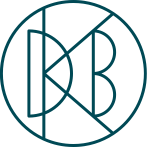Going with the grain of generativity — prompts for B2B SaaS founders
Prompt: “intertwined bottlenecks in the style of an escher drawing”; central image generated using Midjourney, side panels generated through DALL·E 2’s outpainting feature
You’re the founder of a B2B SaaS startup. You’ve seen everything going on with generative models lately—an explosion of images, words, even music. Your earliest investors prod you from time to time: have you thought about adding generative AI to your product? Of course you’ve thought about it—“we’re just trying to figure out where the real use cases are,” you text back. Your heart sinks. You want to feel excited; you’re a technologist at heart, after all, and generative AI is the stuff of your childhood dreams. But the truth is you mostly feel tired, and you can feel that coming through in your diplomatic reply. “Just add generativity” feels like it’s missing the point. You have real users, with real business problems they’re trying to solve. Where can generativity actually help?
Generative AI cracks open nearly infinite possibilities, but we’re still collectively figuring out how to work with the grain of it. We know the latest and greatest models excel at cranking out surreal, vivid images of cute animals in improbable settings, but it’s harder to find ideas for where they can solve real problems in a business context. What can help is prompts for our own minds—prompts that go with the grain of what these models are good at. I shared one prompt last week (“Outpaint your way out”) and have since collected more from my own explorations with generative AI and conversations with B2B SaaS founders thinking about how to fold them into the experiences they’re building. My hope is that these prompts get your wheels turning in a more hopeful way.
Find the fiction. In an interview with Ben Thompson, Nat Friedman used the framing of “fiction vs. nonfiction” as a way to describe where generative AI works out of the box and where it needs more help—“one of the reasons I think images are doing great, by the way, is that images are fiction. Code is nonfiction, it’s testable, the tests have to pass, it can’t have a syntax error. Images, if there’s an extra stray pixel somewhere, it’s part of the art, there’s no error in a way.” By asking yourself where’s the fiction in what our users are trying to accomplish?, you’ll find the spots where fuzzy matching is enough, and where surprise can be welcome.
Storm the fortress of writer’s block. There comes a point in every project where before it can move forward, someone’s going to need to sit down and face a blank page for a hard-to-predict amount of time to create a first draft. If you think back to the last time you sat down to “make a deck” or “write a memo” from scratch, you know how intimidating it can be to begin. (“I’ll have it done by end of day Monday,” you say, knowing full well you’ll poke at it all weekend.) Products like Sudowrite that put generative AI front and center celebrate their ability to “bust writer’s block” by filling the blank page with plausible content at the creator’s direction, helping them feel closer to done faster. In an organizational context, the greatest benefit may actually come from greater predictability: with less writer’s block should come greater clarity and less padding in the schedule. Where is writer’s (or creator’s) block slowing your users down, and where could a generated first draft speed things up?
Text-to-moodboard. Sometimes, the best way to figure out what someone really thinks is to show them a set of plausible options and then ask them to react. Moodboards have long been a useful tool in creative fields; showing a client a range of images that together represent an aesthetic can get them to express non-obvious likes, dislikes, and other direction before “the real work” begins. Where in your product are people trying to collaborate but struggling to choose a direction? Could a generated moodboard help spark the right conversations?
If you’re a B2B SaaS founder thinking about where generative AI could solve real problems for users of your product, reach out anytime at diana@matrixpartners.com. I’ve set aside a day of office hours next week to brainstorm with founders thinking along these lines; I learn from every one of these conversations and I look forward to more.

